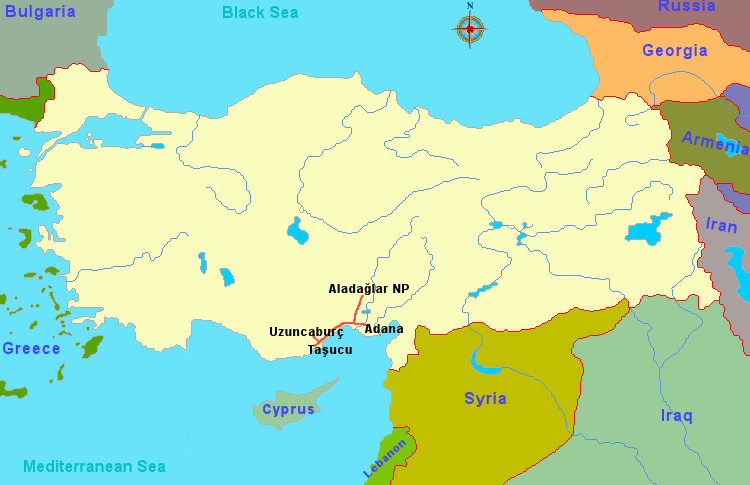Turkey

Historie
The Anatolian Peninsula, comprising most of modern Turkey, is one of the oldest permanently settled regions in
the world. Göbekli Tepe is the site of the oldest known man-made religious structure, a temple dating to
10000 BC, while Çatalhöyük is a very large Neolithic and Chalcolithic settlement in southern Anatolia, which
existed from approximately 7500 BC to 5700 BC. It is the largest and best-preserved Neolithic site found to date and
in July 2012 was inscribed as a UNESCO World Heritage Site.
The earliest recorded inhabitants of Anatolia were the Hattians and Hurrians, non-Indo-European peoples
who inhabited central and eastern Anatolia, respectively, as early as ca. 2300 BC. Indo-European Hittites came
to Anatolia and gradually absorbed the Hattians and Hurrians ca. 20001700 BC. The first major empire in the area was
founded by the Hittites, from the 18th through the 13th century BC.
Following the collapse of the Hittite empire c. 1180 BC, the Phrygians, an Indo-European people, achieved
ascendancy in Anatolia until their kingdom was destroyed by the Cimmerians in the 7th century BC
Anatolia was conquered by the Persian Achaemenid Empire during the 6th and 5th centuries BC and later fell
to Alexander the Great in 334 BC. Following Alexander's death in 323 BC, Anatolia was subsequently divided into
a number of small Hellenistic Kingdoms (including Bithynia, Cappadocia, Pergamum, and Pontus), all of which
became part of the Roman Republic by the mid-1st century BC.
In 324 AD, Constantine I chose Byzantium to be the new capital of the Roman Empire, renaming it New Rome (later
Constantinople, modern Istanbul.) Following the death of Theodosius I in 395 AD and the permanent division of
the Roman Empire between his two sons, Constantinople (Istanbul) became the capital of the Byzantine Empire,
which would rule most of the territory of Turkey until the Late Middle Ages.
In the 10th century the Seljuks started migrating from their ancestral homeland, North of the Caspian and Aral Seas
into Persia, which became the administrative core of the Great Seljuk Empire. In the latter half of the 11th
century the Seljuks began penetrating into the eastern regions of Anatolia. The victory of the Seljuk sultan
Alp Arslan against the Byzantine emperor Romanos IV Diogenes at the Battle of Manzikert
in 1071 gave rise to the Anatolian Seljuk Sultanate, which developed as a separate branch of the Great
Seljuk Empire that covered parts of Central Asia, Persia, Anatolia, the Levant and southeast Arabia.
In 1243, the Seljuk armies were defeated by the Mongols, causing the Seljuk Empire's power to slowly
disintegrate. In its wake, one of the Turkish principalities governed by Osman I would, over the next
200 years, evolve into the Ottoman Empire, expanding throughout Anatolia, the Balkans, the Levant and
North Africa. In 1453, the Ottomans completed their conquest of the Byzantine Empire by capturing its capital,
Constantinople. The Ottoman Empire's power and prestige peaked in the 16th and 17th centuries, particularly during
the reign of Suleiman the Magnificent. (1520 - 1566).
The Treaty of Lausanne of 24 July 1923 led to the international recognition of the sovereignty of the newly
formed "Republic of Turkey" as the continuing state of the Ottoman Empire, and the republic was officially
proclaimed on 29 October 1923 in Ankara, the country's new capital.
Mustafa Kemal became the republic's first President and subsequently introduced many radical reforms with the
aim of transforming old Ottoman-Turkish state into a new secular republic. With the Surname Law of 1934, the Turkish
Parliament bestowed upon Mustafa Kemal the honorific surname "Atatürk" (Father of the Turks.)
I have visited Turkey in may 2013
These are the places i have been in Turkey
Adana
Tasucu
Göksü Delta
Uzuncaburç
Aladaglar National Park
Please let me know when you're having questions.
i would be pleased to help you.
Things to do and other tips
